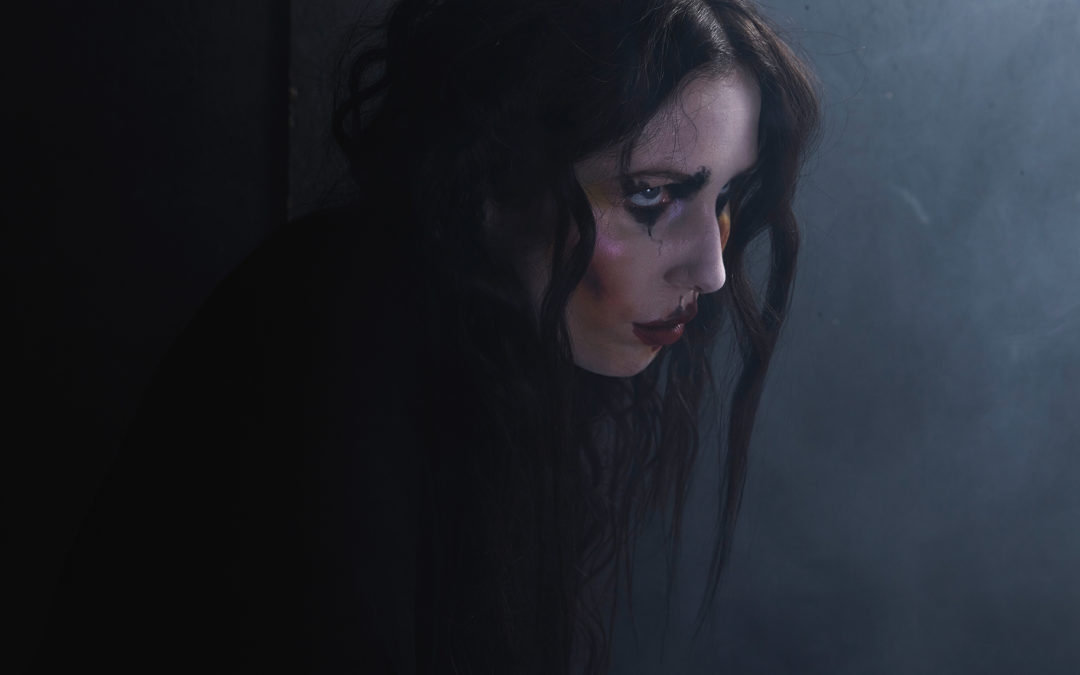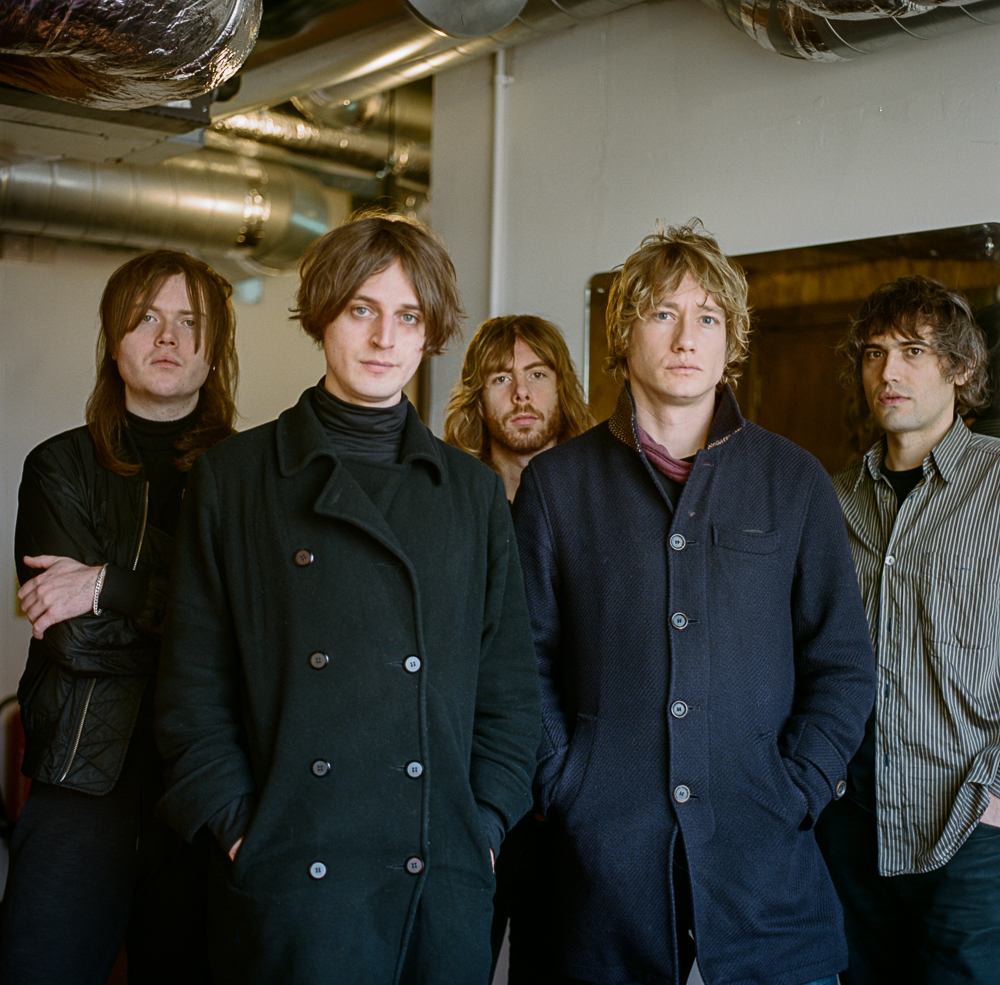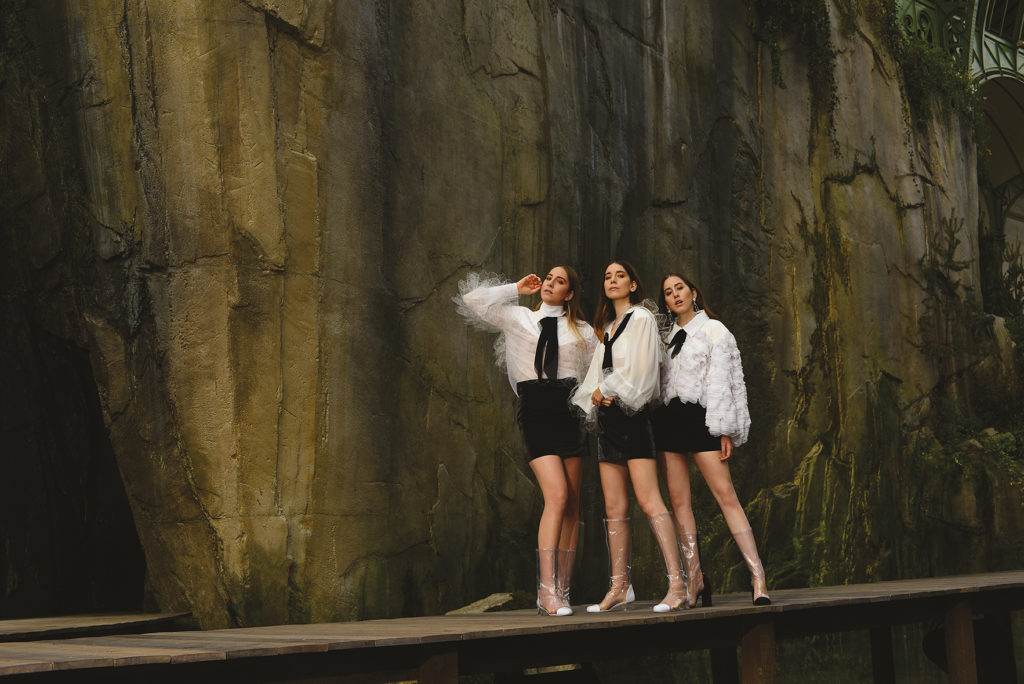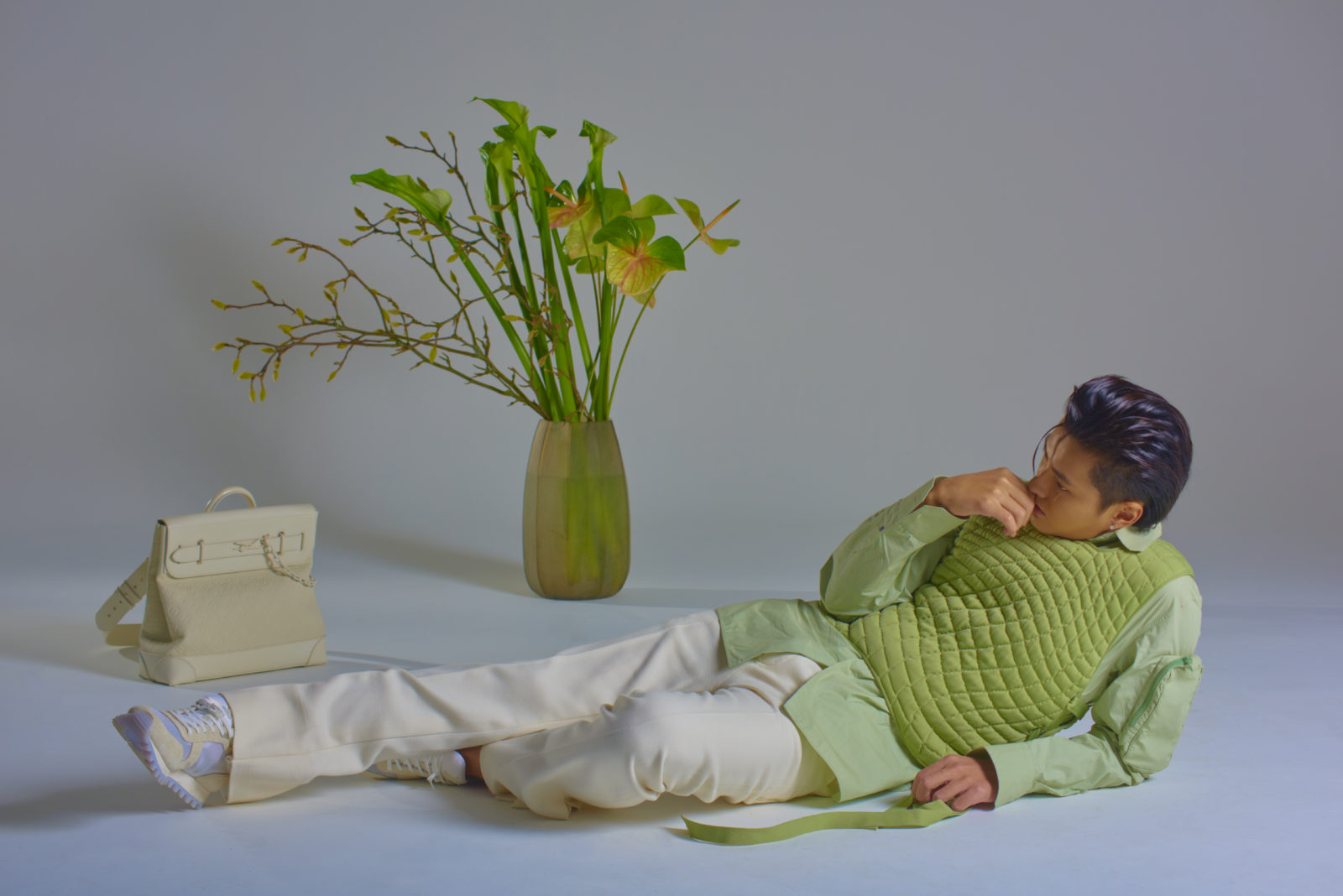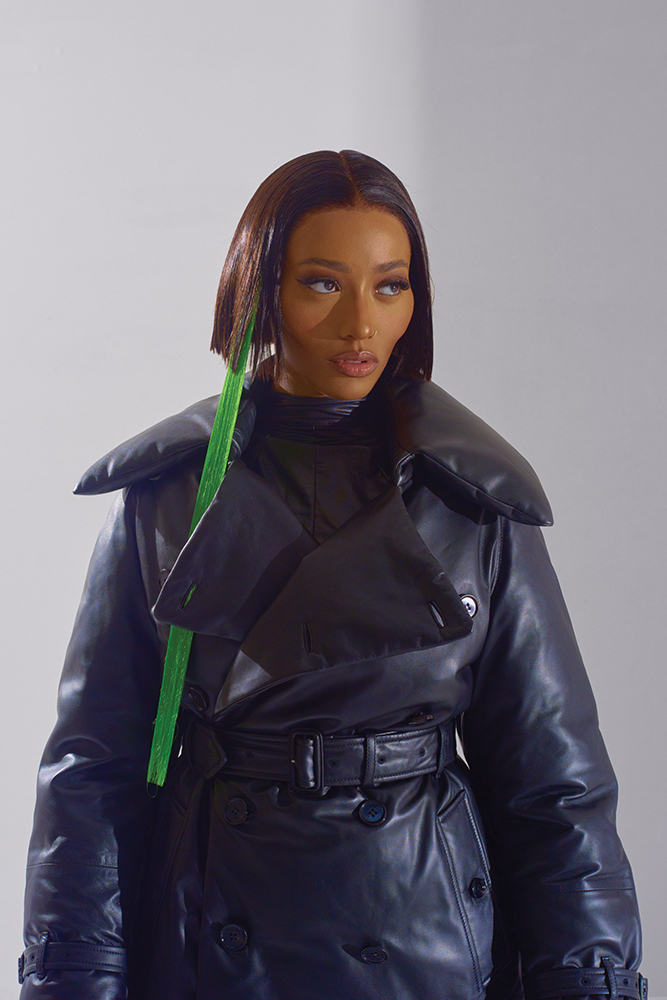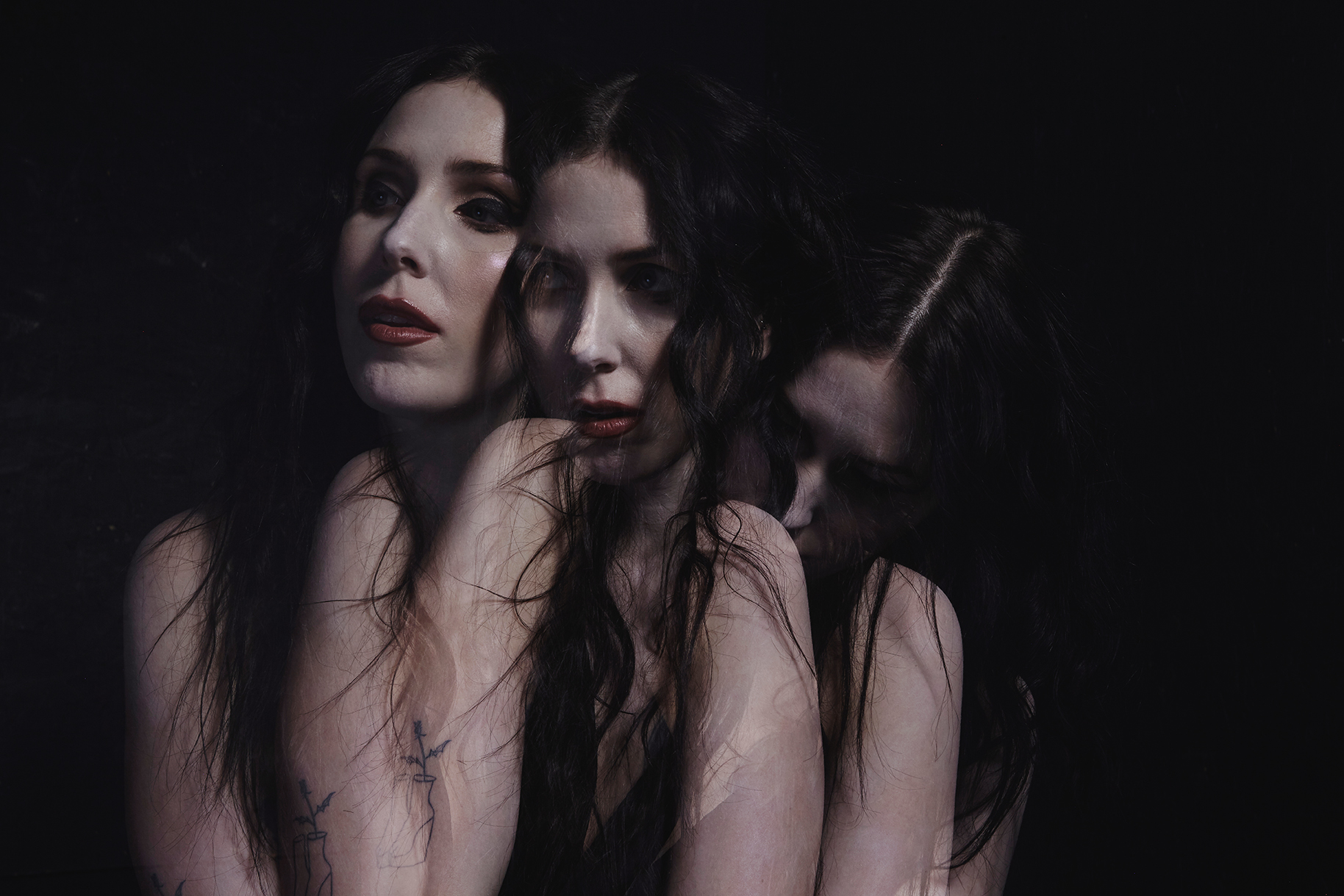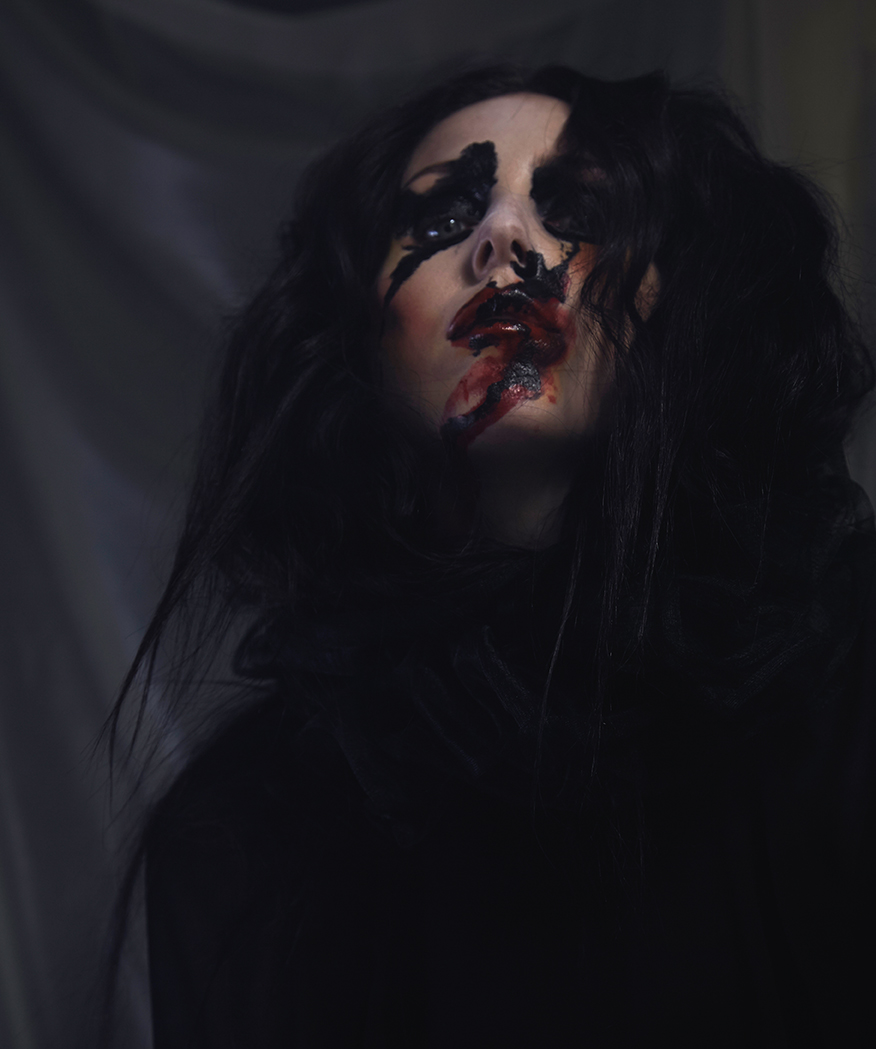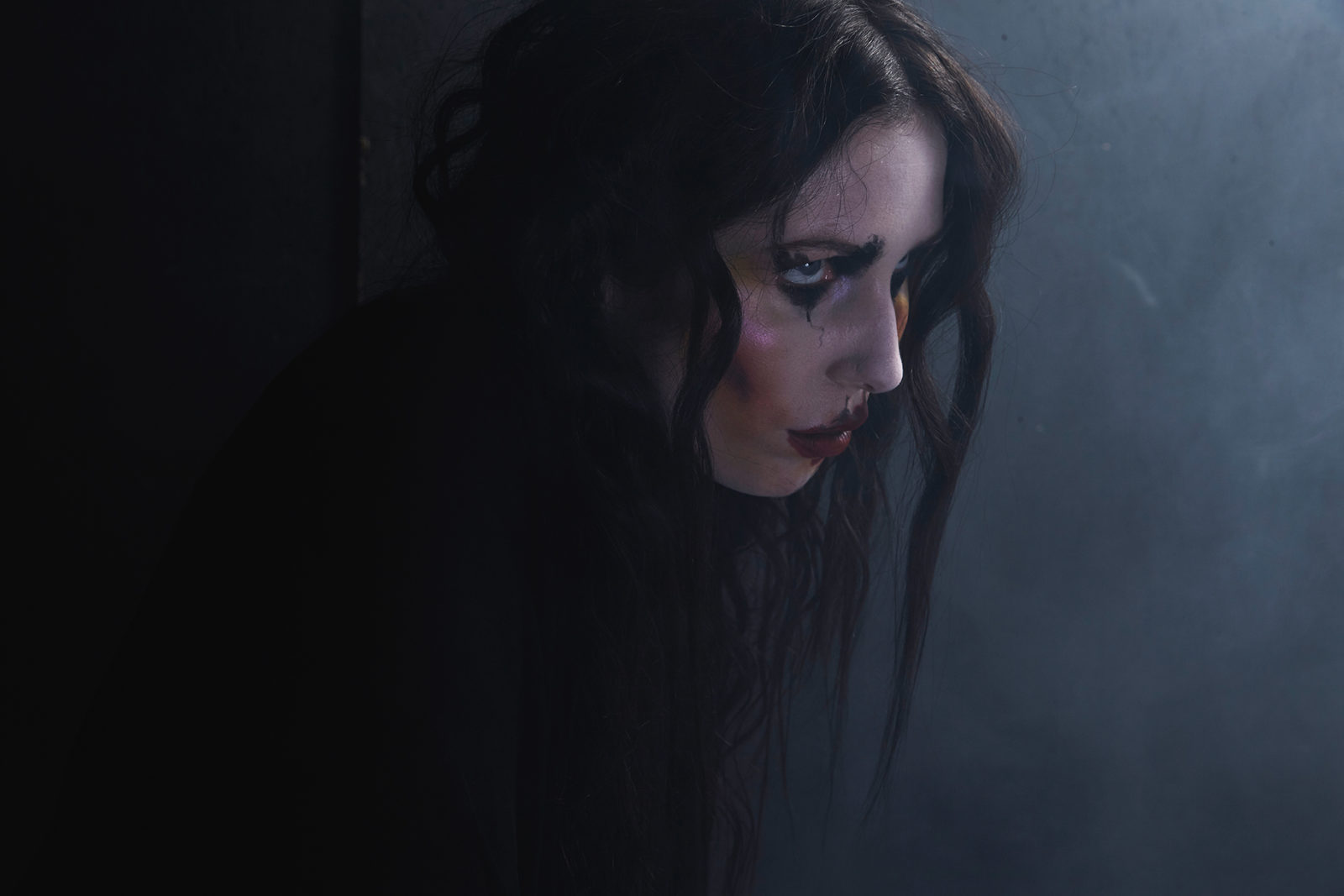
A MEETING WITH CHELSEA WOLFE
By Alice Butterlin
Blurring the lines between metal, neo-folk, and goth since 2010, Chelsea Wolfe has established herself as the priestess of a somber and raw blend of music, driven by a crystalline voice penetrating through a wall of sound. With her latest album Hiss Spun, released last September, she dives further down into the abyss she has explored from the start. Chelsea has worked with some of the best in the business over the years. On her latest project, she teamed up with Troy Van Leeuwen from Queens of the Stone of Age and recorded at Kurt Ballou’s studio in Salem, Massachusetts. We met up with the artist to talk about her career, her latest album, and the anxiety of performing her songs on stage.
How did you start imagining the Hiss Spun project? It seems like it’s the closest you’ve come to a concept album.
I think a lot of it had to do with the fact that I moved back to Northern California, close to where I’m from. I’m originally from Sacramento but I moved a couple hours away. I’d been living in Los Angeles for seven or eight years, away from my family and my old friends. The return home had a lot to do with what I was writing about because I started hanging out with my old friends again, my family. It just brought up a lot of memories and things I haven’t thought about in a long time and have never dealt with in my music before. I started channeling the experiences I had in my early twenties, I was finally processing a lot of that. It also had to do with my own issues with health and addiction, all the anxiety and the lack of sleep that comes with it. Just trying to find a way to survive in this industry.
Was it something of an exorcism of all your personal troubles?
I think so. Trying to confront the chaos of the world with the chaos of my internal state. Also, I think this is the first album where I wrote a lot of songs specifically from the perspective of a woman. A lot of times my music is very genderless and while I enjoy that, something about getting older and being in my early thirties, becoming more comfortable in my skin, makes me want to open up.
The first songs you wrote for Hiss Spun were originally made for a side-project. Can you tell me a bit about it?
I had a drummer already with whom I had been working with for a while in Los Angeles and when I moved back to Northern California, I reconnected with my old friend Jess Gowrie. I used to have a band with her ten years ago and her influence has always been very strong. She really taught me how to be a good front person and she’s a great rock drummer. As soon as we reunited as friends after years of not talking, it was clear that our musical chemistry was not finished. We just naturally started writing songs together and decided to make a side project for it. Over time, it just became clear that it needed to be the next Chelsea Wolfe album, because it was really coming from my heart.
This album stands out as even more heavy than the previous one, going deeper into the Abyss. Was it a result of jamming more with your musicians and having a more collaborative writing process?
Yes, it was definitely more collaborative. My bandmate Ben Chisholm and I have been collaborating for a long time, but the addition of Jess made a huge difference. The three of us really became a band, we were jamming a lot. I really wanted that to reflect on the album. Like you said, Hiss Spun is kind of a continuation of Abyss. I was doing a lot of experimenting on Abyss, trying out these heavy sounds and on Hiss Spun it became more realized and fleshed-out.
You recorded at Kurt Ballou’s studio in Salem which has very specific surroundings. How important is your environment to the way you record?
I think it has a lot to do with it but more importantly, it’s where I write the albums that has the biggest impact on the final result. I usually write at home, that’s where I’m the most comfortable. I make space for a little home studio to record demos. As I’m looking back at my albums I can definitely see that where I was living when I was writing really reflects it. While I was writing Pain is Beauty, I was living downtown in this big old house with a bunch of roommates. It was noisy and there were helicopters over our heads every night. Then, when I wrote Abyss it was right after I moved an hour above Los Angeles into the mountains. It was so quiet and isolated and I suddenly found myself wanting to build an empty space with sound. Again, Hiss Spun had a lot to do with me moving towards my hometown and being in familiar surroundings. Recording in Salem had more to do with the studio itself. The building was really cool and I knew Kurt could capture the sound that I wanted for this album. It was a strange coincidence that it was in Salem which is known for historically persecuting other women. My album had a lot of female perspective and anger for past generations of women.
What do you seek in terms of production? What were the main keywords you gave to Kurt Ballou?
A lot of it was about capturing the drums, capturing Jess’s style and feeling. The building itself has three different levels, so there is this basement dungeon drum room, then there is a middle-section that is the main studio, and finally the upstairs which is like an apartment with recording spaces in it. When I think about the album, I think about these different levels and it’s almost like hell, limbo, and heaven. (laughs) I really wanted the guitar tones to sound metallic in a visceral way, almost like a motorcycle engine. I also wanted to capture a lot of white noise, that was a key element on this. We were always recording pops and hisses, sounds from the studio itself, amps… The in-between sounds are really important.
Working with Kurt, what did you learn on a professional and personal level?
I think on every album that I do, I learn to communicate better. I can communicate through songs all day long but when it comes to explaining exactly what I want to someone else, it doesn’t always come easy. I gave myself a little more time with this album, a whole month to record it and mix it with Kurt. I needed the time to focus on every detail and communicate with him. He was really patient and open, I think we had a good relationship in that way.
You’ve been writing songs since a very young age, but how has the process evolved through time? Do you have specific subjects that inspire you in songwriting?
When I was a kid, I was really just doing it off-the-cuff. I was listening to a lot of radio RnB and my parents were listening to Fleetwood Mac, Joni Mitchell, and a bunch of good music. I had a lot of cool influences at a young age. I think when I was ten years old, I just tried to write like Bonnie Raitt. (laughs) When I got older, I started being into Lindsey Buckingham’s voice. I found that I could sing in the male range better than the female range so I started exploring that for a while. Then I started singing in my soprano voice, it’s really just years and years of experimentation. In my early twenties, I made an album with some local producers. It was very overproduced, very classic structurally: verse/chorus/verse/chorus. I really didn’t like how it turned out. I ended up trashing out the album and after that I started to rebel against the typical song structure for a long time. I made all my songs repetitive and trancey without any chorus or verse. As I got older, I started to accept being a songwriter and falling into a comfortable place. “16 Psyche,” for example, shows I’ve come a long way from not wanting to have any structure. The song even has a guitar solo on it. (laughs)
Is there a band or artist in particular that made you realize that songs don’t have to follow specific rules?
I think it was something about hearing my voice and my music sound so perfect. My voice was too clean and crystal clear, there were way too many lyrics, it didn’t feel right to me. My first official album was The Grime and the Glow. It was just me taking my old 8-track around to different spaces and writing one-off songs off-the-cuff. That felt like the place where I needed to start in my career.
When you look back at your early lo-fi productions, would you ever think of coming back to that set-up?
I’m definitely drawn lately to something that’s a little more simplistic. I do put so much thought and so much energy into the albums, I’m under so much stress. I like the idea of doing songs just for fun. Writing songs to write songs and not overthinking and not having to make this big concept album. I think I always bring lo-fi, shitty recording to my stuff because I never like it when it is too perfect. Even in the studio I’ll drive any engineer I work with crazy because I want to add more and more weird elements when it could be more stripped back. (laughs) I love adding layers and layers of things.
You do a lot of field recordings in places that make interesting sounds. Sometimes you even base your songs on a specific recording, like on “Scrape.”
Ben and I collect field recordings whether it’s from ourselves or stuff that is sent from our friends. Ben had been working with one of his friends on some songs and had sent something he had recorded at a recycling factory. He was drawn to the sound of the tractors in the background scraping on the floor, a natural rhythm that we were both drawn to. We decided to build the song around that. On the song “The Culling,” there is a breakdown in the middle which is a sample of cayotes howling and a motorcycle driving by my old place. We took it and manipulated it into this other totally new rhythm. It’s about finding rhythms that already exist in nature and manipulating them. We’re just taking the opportunity to use any and every sound. There is so much music that is just built in a computer. We both use Ableton to write and record demos, but what makes our music unique is that we don’t just rely on that.
Hiss Spun has two small transition songs that are very industrial and noise-driven. Would you ever want to make longer versions of those?
Yes! Actually, I just finished this piece that I did for my friend Ashley Rose’s fashion week debut. She actually designed the dress that I’m wearing on the album cover. It’s a ten-minute piece based on a recording I took of my heartbeat when I was having a panic attack one time. It was really intense. Sounds of my breath, my mouth, my skin: all based on anatomy. I’m starting to think it would be cool to release some of these longer, soundtracky pieces that I’ve done over the past few years.
You’ve had trouble with crippling anxiety before shows. How did you deal with that and have you ever been discouraged from performing?
In the very early stages of me performing live it was very difficult. There were times when I would just do two or three songs when I got so overcome with anxiety. I had to leave the stage and it was kind of awkward. When I finally put a band together, I found that dressing up and putting a veil over my face in a very Victorian mourning style helped me a bit. I was at a friend’s house and she had a book of Victorian mourning costumes. I went to a thrift store and found this outfit that looked similar. It was very childlike in a way to put that barrier between you and the audience, but it did help me a lot. I relied on that for a couple years. I didn’t want it to become a gimmick though. At one show, right as I was releasing Apokalypsis, I took it off on stage and never wore it again. I actually found it was really empowering to make eye contact with the audience and have this connection. It’s a matter of realizing the power that you have when you’re on stage and finding the comfort in that. It’s not always perfect, there are times when I’m not feeling physically healthy and I don’t want to get on stage or have anyone looking at me. (laughs) Every woman goes through times like that. I still find that clothes and shoes act as good luck charms. Obviously what also helps is practicing and working with my band, it prepares me mentally. I’m getting over it, slowly but surely. It’s not my natural state to want to be up in front of people, but I’ve accepted it as a really important and special part of being a musician. A lot of my musician friends just don’t get it, they love performing and being around people all the time. I’m more of a loner and I need personal time away from people. That’s basically why I live in the woods now. (laughs)
Fashion has helped you be confident in your own skin, especially while performing. You’ve worked with stylist Jenni Henzler for a very long time. How did you meet?
Yes, we’ve worked together since 2011 or something. The guy that ran my first record label was dating her, so he introduced us and we hit it off right away. Our fashion sensibilities were really similar, she turned me on to a lot of great designers like A.F Vandervorst and Ann Demeulemeester. Together, over time, we managed to create a good collaborative relationship. I’ll have some weird inspirations like a cocoon or something textural and she’ll be able to translate it into something wearable. A thing that I love with Jenni is that she leaves raw edges. Ever since I was little I would always cut the hems off of my jeans or rip holes in my t-shirts because I like things to be a little imperfect. There’s a beautiful skirt that Jenni has made and at the bottom it’s a raw edge so over time the strings fall out and it becomes more and more interesting and textured. I think we understand each other’s sensibilities.
Are you still inspired by fashion today?
I get mostly inspired by photos from fashion shoots, it’s a good way to tell a story. I love photographers like Tim Walker. As I’m getting older, I’m starting to better understand myself and have more of a personal style now. I’m never really looking for new trends but rather I know what I like to wear and what I’m comfortable in at this time. On a daily basis, I wear a lot of clothes from the brand The Sisters of The Black Moon. It’s a lot of black long silhouettes, interesting shapes and stuff that could pass for late-1800s Victorian-era clothes.
I read somewhere that you were a fan of the musician Colleen. She’s an avid birdwatcher, are you also an observer of nature?
I really like to just go on walks. I live at the base of the Sierra mountains so there are pine trees as far as I can see. I just take drives to beautiful spots and go on a little hike. I wouldn’t say I am a birdwatcher but I love when there are ravens around because they are just so cool, smart, and weird! In the mornings, you’ll hear a couple of them flying over your head. I love living around trees and I found the perfect house that is surrounded by them. They are so beautiful and comforting to me. I don’t plan to ever live in a city again. I’m about three hours from San Francisco and I’m used to it by now.
You have a radio show on Red Bull Radio where you present themed playlists. How did you get started?
Red Bull came out of nowhere and asked me. I had done an interview with Red Bull during a European tour and then they told me they were relaunching their radio platform and asked me to join in. At first I was hesitant and thought the job wasn’t really for me since I’m not a big talker. I didn’t even know what I would play, it seemed like something I couldn’t do. Then I went back on my decision and thought I would give it a try. I actually found that it was really interesting and enjoyable to go through all these songs that I hadn’t listened to in years. I rediscovered music that was influencing me when I was eighteen and brought it back to the present, reflecting on what I liked about it and what memory was attached to it. It’s very personal and because I’m not a huge music historian, I have to do research on some artists. Breaking them down into themes just makes it easier.
It’s always interesting to have a look at what your favorite artists are listening to, whether it’s new or old. Is it something you enjoy?
Yes, actually yesterday a friend of mine told me that Fever Ray released a playlist of artists that influenced her latest album and she had one of my songs on there. I thought it was the coolest compliment to get! I’m a big fan of Fever Ray so I was blown away by that. It’s always cool to hear what your favorite bands are into. Some stuff that I play on the radio show, I’m hearing for the first time. I’ll also ask my friends for suggestions for certain themes. That keeps it really personal.
The theme of this Crash issue is Revolution. Do you think a revolution is still possible in 2018 or is it a lost concept?
I think we can definitely start a revolution. I’ve seen it with women right now, speaking up about things that we used to have to keep inside for fear of losing our jobs or any opportunity. The tables are finally turning and people can speak out about all the bullshit they’ve had to deal with from men for years and years. That’s part of the theme of Hiss Spun: anger as a woman and anger for the generations past of women who have had to go through so much. There is still such a long way to go. I definitely see a revolution of women standing up and being empowered. It’s important for the world and the younger generations of girls to see that.
What do you think about starting a revolution through social media?
That is tricky. The internet is like the Wild West, there are no rules. It’s hard to trust people on the internet, at least from my experience. A lesson I’ve learned is not to work with someone unless you’ve met them in person and spent some significant amount of time with them. I’ve made the mistake of signing with a label a long time ago without knowing the person and it turns out it wasn’t the best fit for me. It’s cool to build a community online and find support online, but it’s equally important to build a community in real life. You have to make sure you’re actually doing something on a daily basis and not just in this fictitious internet world where you’re staring at a screen. I do think it’s helping people stay accountable. I have my own issues with the internet and the negativity of it all. I’m really not on there a lot. I don’t like constantly being pressured with people’s opinions, it’s quite unhealthy. You need to take time to be free, be yourself, and live in the real world.
Photographer: James Mountford
Make-up: Blake Armstrong
Hair: Kyle Mihm






